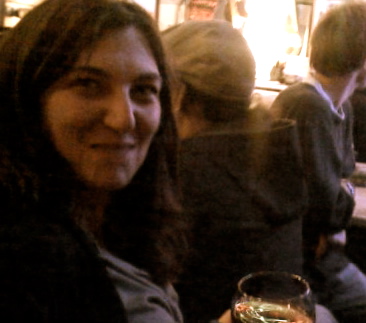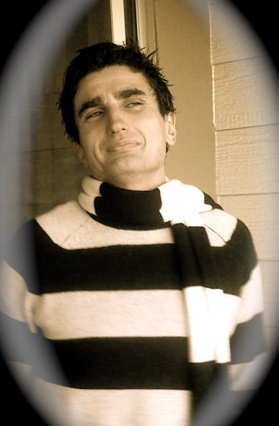|
Fractals, Topologies and Logic Tamar Lando Darko Sarenac |
 |
|||||||
|
This tutorial explores the connection between fractal geometry and topological intentional logic. The main cluster of results we present is a class proofs of completeness of the modal logic S4,and Intuitionist Propositional Logics with respect to the following fractals: Koch Snowflake/Curve, Sierpinski Carpet, Menger Cube, which all are well known classic fractals. The main corollary of the paper is a new proof of the completeness of afore mentioned logics for most significant n-dimensional Euclidean metric topological space R, R^2 and R^3. The latter results were originally obtained by Tarski and MacKinsey in [7], and much simplified and refined by Mints et al. and van Benthem et al. [examples, variations, and refinements can be found in [1], [2] and [4]]. Our new proof uses fractal techniques, that, as we will argue is the main contribution to the topological semantics for modal logic in recent years. The completeness for both Koch Curve and other fractals and R^n are best seen as examples of the power of the fractal techniques introduced here. Another somewhat original contribution is the use of the infinite binary tree with limits, Wilson tree. We prove that such a tree is complete for S4 and related logics in several extended languages. Such proof then facilitates topological transfer onto fractals and metric spaces. Although this tree has not to our knowledge been used previously in the modal logic community, and we have introduced it independently, it has since come to our attention that the tree has been used and named in category theory by Peter Freyd sometime in the late 1980s. [We follow his naming convention in calling the tree Wilson tree. Wilson tree is obtained by a kind of model saturation technique called `sobering' from the more usual infinite binary branching tree. The name is then derived from the fact that Wilson was the founder of the 12 step recovery program.] In this tutorial the following topics are considered. We begin the tutorial by placing topological techniques and the techniques of fractal geometry in the pantheon of various spatial techniques in both universal approach to logic and in the full gamut of formal approaches to reasoning about space, space-time, and spatiotemporal dynamics. In the spirit of the school on universal logic, we will be emphasizing techniques that are portable and universally applicable over particular results and systems. We continue by introducing a class of self-similar fractals and discussing their usefulness in various model-construction techniques in topological modal logic. We look at a series of well-known trees, both finite and infinite discussing their fractal nature and demonstrating their connection with well known fractals, such as for instance, Koch Flake/Curve, Sierpinsiki Carpet, Menger Cube, and many others. We then explore various topological and logical properties of fractals. We will show that each of the three fractals mentioned, Koch, Sierpinski, and Menger, is in some sense universal for a class of model theoretic or topological objects. A distant topological relative of this result was first proved by Sierpinski in the early 1920s. We will explore logical relevance of this result. In showing the relevance we will use another three called Wilson Tree. This tree--like the infinite binary branching tree--ought to be well known, but it is not. We will explore the immense usefulness of the tree in reasoning about complete metric Euclidean spaces and speculate about the reasons why the tree is not more commonly known among modal (and intensional) logicians. As we mention in the introduction above, after we reinvented the tree, it turned out to be a rather standard object in Category Theory. We will explore some connections between results in category theory by P. Freyd and A. Scedrov and some well known results in topological semantics. We will conclude the tutorial by looking at the class of intensional logics, (S4, S4u, S4 + time, Int. Logic, etc.) to which the fractal techniques introduced here apply. If we have some extra time, we will look at a recently introduced Probabilistic Modal Logics of Dana Scott. |
||||||||
 |
||||||||
| References [1] M. Aiello, J. van Benthem, and G. Bezhanishvili, "Reasoning about space: the modal way," Journal of Logic and Computation (13)6, 889--920, (2003). [2] G. Bezhanishvili, M. Gehrke, "Completeness of S4 with respect to the real line: revisited", Ann. Pure Appl. Logic 131(1-3): 287-301 (2005) [3] P. J. Freyd and A. Scedrov 'Allegories, Categories', North-Holland (1999) [4] P. Kremer and G. Mints, ``Dynamic Topological Logic,'' in Handbook of Spatial Logic, M. Aiello, I. Pratt-Hartmann, J. van Benthem (Eds.), Springer, pp 565-606, (2007). [5] T. Lando and D. Sarenac, Sierpinski Carpet, Menger Sponge, and Fractal Techniques in Topological Modal Logic. (Forthcoming 2009.) [6] T. Lando and D. Sarenac, "Fractal Completeness Techniques in Topological Modal Logic: Koch Curve, Limit Tree, and the Real Line." (Forthcoming 2009.) [7] J.C.C. McKinsey and A. Tarski, "The algebra of topology", Ann. of Math. (2) (45), 141--191, (1944). [8] M. Schroeder, 'Fractals, Chaos, Power Laws: Minutes from an Infinite Paradise', New York: W. H. Freeman, pp. 41-45, (1991). |
||||||||